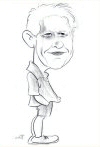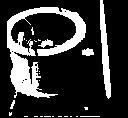

Event Enhanced Quantum Physics (EEQT)
Links to my other online papers dealing with hyperdimensional physics
|
Transdimensional Transfer Techniques
For other pages where time travel is discussed use search engine of our site and follow the links. Search also for "time loops", "time machine", "time travel", "transdimensional remolecularization" |
||
|
I. Introduction In 1987 I decided to change my research profile. Since 1982 I have been developing new hyperspace theories which would allow for other "shapes" of internal space than were originally allowed by Yang-Mills type generalizations of Kaluza-Klein theories. Perhaps I need to explain first what I mean by the above, as it does have a relation to my later research endeavors. In 1921 Theodor Kaluza published a remarkable paper "On the Unity Problem of Physics" [1] . He argued that if we add fourth space dimension, then one force (gravity) in five-dimensional (4 space + 1 time) splits into two different forces (gravity + electromagnetism) as seen by us, who are blind to the extra dimension. In 1926 Oskar Klein developed Kaluza's idea one step further by showing that charge quantization can be explained by assuming that extra dimension was "closed" into a circle. [EXPLAIN, MAKE A DRAWING]. The one-dimensional rotation group acting on this circle was related to "gauge transformation group" of the electromagnetic field. In 1952 C.N. Yang and R. Mills generalized electromagnetism and introduced "non-Abelian gauge theories", where there is not one, but many electromagnetic potentials, and where the "gauge group" can be any group of not necessarily commuting matrices. For instance, weak interactions are nowadays thought to be related to the group of 2x2 complex unitary matrices of determinant one - SU(2). Possible ways to generalization of Kaluza-Klein theory with more than one extra dimension, so as to be applicable also to other than electromagnetic gauge groups, were discussed by several authors (J.M. Souriau (1962), B.S. de Witt (1964), J.M. Rayski(1965), but a full geometrical and dynamical theory was developed only by R. Kerner(1968), A. Trautman(1970), and Y.M. Cho and P.G.O. Freund (1975). Non-Abelian Kaluza-Klein theory (as it was called) allowed for a unified description of gravity and of "gluon fields". While photons are quanta of electromagnetic fields, and electromagnetic field "glues" electrically charged particles together (thus attraction of opposite charges), gluons are quanta of Yang-Mills fields that glue together particles carrying charges other than electrical (elementary particles are known to carry also leptonic charges, hadronic charges etc.) In the late 70-es we had a geometrical theory that enabled us to derive interactions of all these charges from one unifying force: gravity in hyperspace. The theory was really neat mathematically, but it also had some drawbacks and lack of naturality. The "internal space" in this theory had to have a particular geometrical structure - it had to be a "group manifold". To explain what "group manifold" means let us consider the case of weak interactions. In electromagnetism the internal symmetry group is O(2) - rotation group in a plane, with one parameter - the rotation angle. For weak interaction the internal symmetry group is O(3) - the rotation group of 3-dimensional space, with three parameters (it looks like a 3-ball) that correspond to independent rotations around each of three axes. Although the group itself has three parameters, it can operate on a 2 dimensional sphere. If so, then Occam's razor principle would suggest that we should first try the internal space as a 2-sphere rather than 3-ball ("What can be done with fewer is done in vain with more"). That was, originally, the idea proposed by Souriau and de Witt, but somehow, for years, nobody was able to convert it into equations. In 1981 a paper by Edward Witten appeared that generalized the "Kaluza-Klein Ansatz" (so it was called) to cover the situations in which the internal space could be smaller than the full group manifold, but the geometrical meaning of Witten's paper was rather obscure. In 1982 another paper appeared, this time by A. Salam and J. Strathdee, that developed Witten's ideas further on, but without clarifying the underlying geometrical principles. Formal operations on mathematical symbols could not be converted into geometrical concepts.+
|
||
|
Last modified on: June 27, 2005.
.

